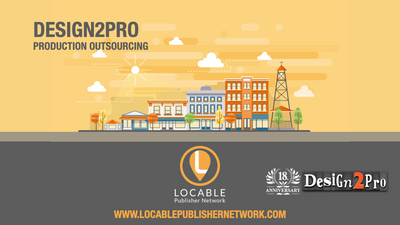Lessons from Patch.com's Demise: Nearly Every Industry Has Local Distributors, Why Not the Internet?
We started Locable as an MBA research project nearly 5 years ago and in early 2009 the buzz-word hyperlocal carried a lot of momentum yet Patch.com was still small but growing. Now, as we end 2013, word comes that Patch.com is shutting down after a series of layoffs and ongoing network construction.
As hyped as the growth of Patch was I'm sure it's conclusion will be equally filled with hyperbole and unfounded statements. So, to counter the oft-wrong conventional wisdom, I'll put forth a couple observations we've made over the years from Patch and the general attempts to capitalize on the local/hyperlocal opportunity.
It has been said that "local" is a retail business. In retail, there are both boutiques and chain stores, franchises and big-box. They coexist, some more profitable than others, some more revered but all are viable - when done right. We'd actually propose a different analogy for local media which is local services such as HVAC (heating and air conditioning), these local businesses sell national brands but handle the last mile from installation to service and support, even marketing (usually with co-op dollars).
At Locable, we question why nearly every industry utilizes local distributors while people have largely assumed that the Internet doesn't or shouldn't. Whether it's local content or advertising, promotion and marketing services why shouldn't a distribution channel that combines best-practices and common technology with local voice, values and insight be the preferred course of action?
Observation 1: Cost Structure
It may sound obvious, but Patch's biggest issue is its cost-structure. It's often assumed that to scale local the cost structure needs to be taken as a given but consider this history lesson that's near and dear to my heart:
During the Space Race, the United States invested millions of dollars in a pen that would write in zero gravity. Without the pull of gravity working on the ink the pen needed to be properly pressurized to ensure consistent performance and, to this day, you can buy a zero-gravity pen as a novelty. The Soviets took a different approach... they used a pencil.
A pencil wasn't as sexy but it was perhaps a better utensil as erasing proved important for astronauts trying to write while floating.
Don't fall prey to the thinking that high costs are the only option. In fact, existing local publishers or owner-operators have built-in cost efficiencies that a large organization doesn't.
Observation 2: Sources and Diversity of Revenue
Patch.com followed the big newspapers in thinking that revenue should be primarily linked to banner ads and, thus, monetization tied closely to web traffic as growing value was tied to scale. This is difficult to do locally, especially from a cold start, it often resulted in low-value/low-ROI advertising for local businesses. Delivering a range of solutions rather than single-point advertising would have been a higher value and result in more revenue.
Exploring additional ways to drive revenue would have helped Patch.com grow faster though they likely still would have fallen short due to their cost structure.
Observation 3: Product
Many staunch independents have reported disdain for cookie-cutter local sites, the use of 'fluff' and other techniques Patch and others have adopted to reduce cost while upping traffic and engagement. The funny thing is that cookie-cutter works when it comes to things like design, practices, processes etc it is the nature of the content that should vary. Think about it, all magazines or newspapers are printed with ink on paper using nearly uniform dimensions yet the quality and relevance of the content is what makes one successful and another destined for the trash heap. Moreover, "quality and relevance" doesn't have to mean Pulitzer Prize-worthy - people like fluff content because it's fun and easy to consume and when it's local it's also about people and places they know and identify with.
Like all things, viewing the 'local' world in black and white often results in missing out on the opportunity for color - thoughtfully combining different types of content are critical. Successful local sites are community resources and their content is not merely 'articles', overlook the value of events and business information at your peril.
Observation 4: Team and Emotional Investment
Local media is hard, just like running a local business is hard. It's challenging to delegate this lifestyle to employees. Patch experienced tremendous turnover, some due to layoffs and others due to employees quitting. Running a local business is a lot of work and without true buy-in like that of a business owner turnover will always be high and product quality will vary wildly as a result.
As Jeff Jarvis said, "the secret to success in hyperlocal is passion: caring about your town."
In Conclusion
Local is a huge opportunity because people care about their community and when there is a desirable audience there is money to be made - as local businesses want to reach those people in a variety of ways. Markets vary but tools, best practices, and general approaches don't - homes in some regions use stucco others use siding but aside from some cosmetic differences most homes are built in a similar way and in all cases a hammer and nails are consistent tools of the trade - this should be the local media mindset.
At Locable we endeavor to build authentically local community in partnership with great local publishers, we provide the tools, training and support they provide the local relevance and together everyone wins. Learn more about how Locable can help you profitably build community locally.
For more commentary read Michele McLellan's takeaways from Patch or Wired's take.




